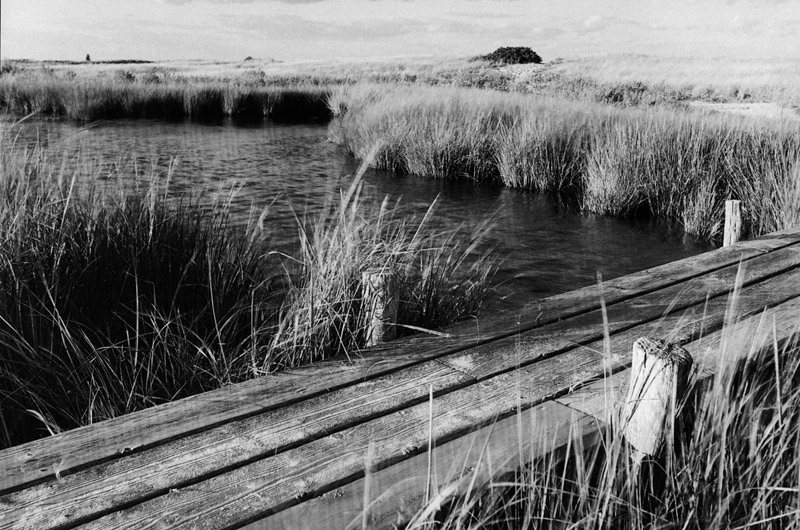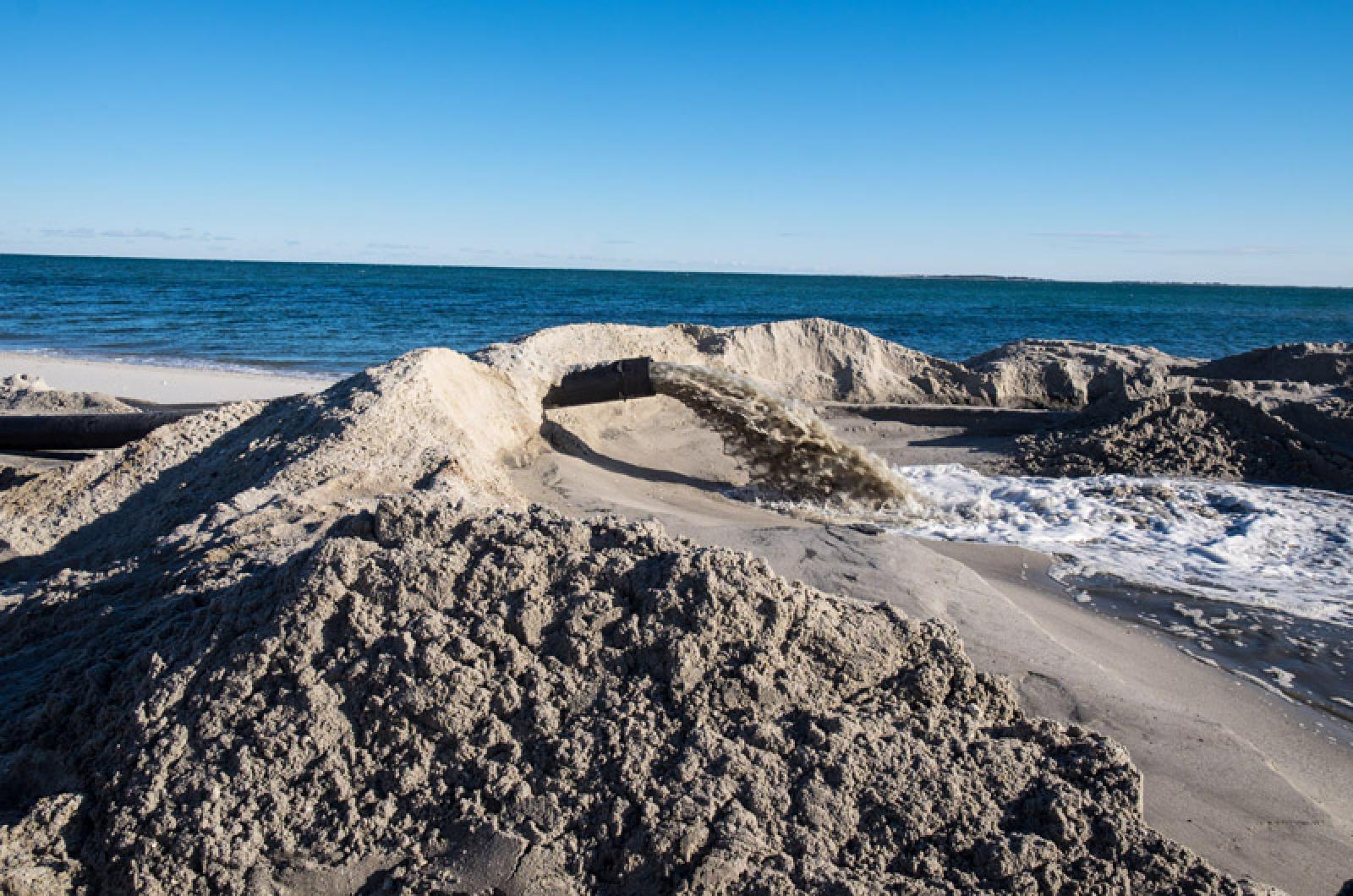With dredging season in Edgartown coming to an end, Fuller Street Beach has gotten a fresh makeover, and boaters can look forward to safer passage in Eel Pond in the spring.
On a bright afternoon this week, a large number of seagulls and the occasional walker were enjoying the beach, where a large pipe extended about 3,500 feet from the pond, ending just north of the Edgartown Lighthouse. A steady north wind slightly muffled the skittering of sand through the pipe and the humming of a front-end loader.
Seagulls gathered in a small channel where the pipe ended, as Mark DeFeo drove back and forth in the front-end loader spreading piles of sand toward the lighthouse.
The project will benefit dozens of private mooring holders, along with the many people who enjoy the public beach throughout the year. Next Friday marks the arrival of winter flounder in the pond and the last day for dredging.
The Edgartown dredge committee — the only group of its kind on the Island — decides where to dredge each year. In a conversation with the Gazette this week, committee member Dudley Levick speculated that around 4,000 cubic yards will have been removed from the pond by next weekend. The total amount will be confirmed by a survey in the spring.
“A lot of sand has been moving along that shore and it took all the sand off of Fuller Street Beach,” said Edgartown harbor master Charlie Blair, who serves as an advisor to the committee. “It was almost cut right back to the road.” The movement of sand along the shore has created heavy shoaling in Eel Pond and begun to close off the harbor southeast of the lighthouse.
The town dredging program began in the 1980s when the committee decided that the cost of regular maintenance justified the town having its own dredge. Voters agreed, later approving the $400,000 purchase. The dredge committee has an annual operating budget of about $132,000.

Edgartown was also the first town on the Island to obtain a comprehensive dredging permit, which now covers about 17 sites that are tagged for maintenance.
Eel Pond was dredged a number of years ago, but sediment has gradually reaccumulated. A large amount of sediment was removed again last year, but a harsh winter reversed much of that progress. This year, the town began preparing earlier, but work couldn’t begin until mid-November to comply with state guidelines.
Mild weather this year has allowed for quick progress at the site.
“Usually we lose a lot of days due to frozen equipment and you name it,” said Mr. Blair. “Everything that can go wrong goes wrong in the winter time.”
The project may still not reach its goal, but will come close. “We are going right to the end,” Mr. Levick said. “What will be left over to do will not be enough to merit the dredge coming back next year.” Workers will likely continue shaping the new beach after the deadline for working in the pond.
Meanwhile, the dredge committee is taking comment on which projects to pursue for next year. Edgartown shellfish constable Paul Bagnall, who advises the committee, hoped it would turn its attention to Cape Pogue on Chappaquiddick, where increased circulation could benefit eelgrass and shellfish.
Edgartown received $62,250 last year from the office of Coastal Zone Management for a large-scale restoration at Fuller Street Beach, Lighthouse Beach and Lighthouse Pond, but the current project is covered entirely by town funds.
A smaller dredge was at work this week in Edgartown Great Pond, clearing away sand to facilitate the annual breaches that flush the pond and increase salinity for aquaculture. Two years ago, the town and Great Pond Foundation teamed up to remove shoaling caused by Hurricane Sandy in 2012.
In 2009 and again in 2014, the town removed a large amount of sand from Sengekontacket Pond, improving circulation, and sold the material to private landowners for beach nourishment in the area. But dredging often has to be repeated as shorelines undergo erosion and sedimentation.
“We did a really good job up in Sengie, but unfortunately things are going to fill in, beaches are going to keep eroding,” Mr. Bagnall said. “It’s probably a couple years out, but it wouldn’t surprise me to see the dredge up there again.”
Another dredge is clearing space for moorings around the old Harbor View dock, just west of the lighthouse. Mr. Blair said only a few hundred cubic yards would be removed from the site.
The town dredging season ends Jan. 15.









Comments
Comment policy »